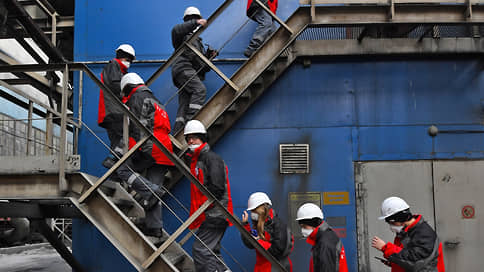Industrial production statistics show a slowdown in output growth rates
[ad_1]

Rosstat data on industrial production in July show both a slowdown in annual output growth rates and a deterioration in intra-annual dynamics after the “local overheating” of the spring months. Analysts believe that there is no particular reason to expect production growth in the near future. The White House, however, is already looking into the long-term perspective and in the strategy for the development of processing until 2035, approved yesterday, lays the annual growth in output in this sector by an average of 4% per year.
Rosstat raised the estimate of industrial production in the Russian Federation in 2022 (after the receipt of new data, including from small and micro enterprises) and, accordingly, lowered it for the first half of this year. Now statisticians believe that last year industrial production grew by 0.6% (the previous estimate was a decline of 0.6%). Including in processing, the indicator increased by 0.3% (minus 1.3%), in mining – by 1.3% (0.8%). In the first half of 2023, the output estimate was lowered from plus 2.6% to plus 2.2%. Including from minus 1.2% to minus 1.3% in production and from plus 6.2% to plus 5.2% in processing.
In July, due to the “base effect” (in the second half of 2022, the economy began to recover), output in annual terms increased less significantly (by 4.9%) than in June (by 5.8%). In processing, growth slowed to 9.5% from 11.8%, in production, the depth of the decline was 1.5% versus 2%, respectively. Rosstat, we recall, closed the data on oil and gas production, analysts of the Telegram-channel “Solid Numbers” estimate the decline in the sector in July at the level of 2.8% in annual terms and by 0.8% – month on month (seasonally adjusted ).
In the month-to-month measurement, Rosstat records near-zero industrial output growth rates (seasonally and calendar-adjusted) for the second month in a row – minus 0.1% in July and minus 0.2% in June after an increase of 0.8% for May.
Corresponding estimates in the aggregated sectors of statistics are traditionally not given, however, according to the Center for Macroeconomic Analysis and Short-Term Forecasting (CMASF), excluding volatile industries and military enterprises, seasonally adjusted output in processing in July decreased by 0.3% against 0.1% decline in June and three previous months of growth by an average of 0.8%. “The slowdown in the industry that began in June is taking hold, and after a local warm-up, it was expected. The growth was too high and did not fit into the current demand parameters,” notes Vladimir Salnikov, an expert at the center. Among the main industries that grew rapidly, but moved to stagnation or “corrective decline”, he names mechanical engineering, pharmaceuticals, the production of vehicles, building materials, as well as oil and gas production. The food and chemical industries and woodworking are also growing.
“The overheated industry has reached the limit of its potential (including due to a catastrophic shortage of labor resources), which is still subject to the systematic tightening of sanctions restrictions on exports,” commented the statistics of MMI Telegram channel analysts. Vladimir Salnikov believes that in the short term, within the current volatility, the industry may begin to shrink, since, unlike the “positive shock” in engineering and construction, there are no reasons for noticeable growth in other segments. The main uncertainty is in the hydrocarbon production sector.
We note that the government recognizes the limited potential of the current recovery growth, but optimistically aims for an annual increase in production by an average of 4% until 2035.
This follows from the updated strategy for the development of the manufacturing industry for this period, approved yesterday at a meeting of the Cabinet.
To overcome the limited growth, the state will continue to stimulate the investment and innovation activity of the industry within the framework of existing mechanisms (SZPK, SPIC 2.0, reengineering) and intends to increase the demand from the state for its products. This guaranteed demand is used by the government’s industrial bloc to limit import purchases by state-owned companies. In parallel, the authorities promise to stimulate the export of industrial products. The cross-cutting goals of the new strategy were announced to deepen the degree of processing and processing levels of raw materials, ensure the production of critical components and components, as well as reduce the development and sale cycles of products.
[ad_2]
Source link






